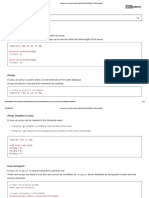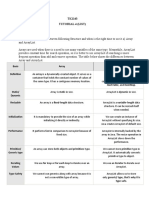0% found this document useful (0 votes)
8 views7 pagesCollection Arraylist
The document explains the ArrayList class in Java, highlighting its resizable nature compared to built-in arrays. It provides syntax for creating an ArrayList, methods for adding, accessing, modifying, and removing elements, as well as how to determine the size of the ArrayList and loop through its elements. Examples of code snippets are included to illustrate these functionalities.
Uploaded by
sainipattanayak1995Copyright
© © All Rights Reserved
We take content rights seriously. If you suspect this is your content, claim it here.
Available Formats
Download as PDF, TXT or read online on Scribd
0% found this document useful (0 votes)
8 views7 pagesCollection Arraylist
The document explains the ArrayList class in Java, highlighting its resizable nature compared to built-in arrays. It provides syntax for creating an ArrayList, methods for adding, accessing, modifying, and removing elements, as well as how to determine the size of the ArrayList and loop through its elements. Examples of code snippets are included to illustrate these functionalities.
Uploaded by
sainipattanayak1995Copyright
© © All Rights Reserved
We take content rights seriously. If you suspect this is your content, claim it here.
Available Formats
Download as PDF, TXT or read online on Scribd
/ 7































































